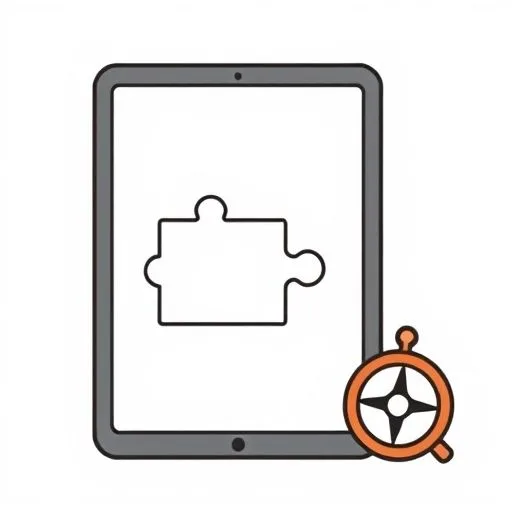
You know, after the kids are finally asleep, and we’re just unwinding, I was thinking about what one of them asked today. ‘How does the weather app really know it’s going to rain?’ It hit me right then—so much of our world, even the quiet moments, is touched by something like AI. We hear so much about it in the news, sometimes with a whisper of worry, but then I see how it helps doctors, or makes our travel smoother, and what if we could explore this with the kids, not as a complex topic, but as another adventure we share? I think there are simple, joyful ways to turn that curiosity into something we learn together, right here at home. It’s about finding that sweet spot for balancing AI and kids for busy parents, making it feel less like a chore and more like a shared discovery.
When Kids Ask ‘How Does It Work?’

It’s funny, isn’t it? Their innocent questions—like wondering how the weather app knows rain is coming, or how a robot ambulance picks the fastest route—often mirror the big, complex problems AI is designed to solve. We were laughing about their ‘robot ambulance’ thought last night, especially when it led to a spirited debate about whether taking an ‘ice cream detour’ was ever a bad idea!
But in those moments, I see a chance. Instead of just giving a quick answer, we can turn these abstract ideas into something they can touch.
It’s like building blocks, but with a turbo boost of imagination! AI takes patterns, just like we find patterns in their favorite games.
We don’t need fancy tech; even a free AI art generator, creating silly family portraits or designs for their imaginary creatures, can spark that hands-on exploration. I watched you with them the other day, patiently explaining how a simple game ‘learns’ what they like, and it just made me realize how natural this can be for us.
It’s a wonderful example of how to use AI wisely with children, turning everyday tech into a moment of shared wonder and understanding, all through your gentle guidance.
Screen Time Reimagined: More Than Just Watching

I know we often talk about screen time, about finding that balance. It’s always on our minds, right?
Well, here’s the thing—what if we started to see it differently? Not just as passive consumption, but as a chance for active problem-solving, a creative partner for them.
Remember that little puzzle game we played last week? Just ten minutes of us figuring it out together, and I could see their little minds buzzing, collaborating, even when the AI game tried to tell us to ‘jump forward’ and they insisted on doing ‘sideways wheelies’ for giggles! It wasn’t about the game itself, but the conversation, the shared challenge.
It made me think that AI, in its simplest form, isn’t a mysterious black box; it’s more like a really good map. A tool that helps us find new adventures, guiding us, but always with us in the driver’s seat, deciding where to go and how much fun to have along the way.
Your patience in guiding them through those moments, turning a simple app into a learning experience, is something I really admire. These small, intentional choices are the best AI screen time tips for families I’ve seen, showing that digital balance isn’t about avoidance, but about thoughtful engagement.
Cultivating Curiosity: The Heart of Digital Balance

It’s not always easy, is it? Knowing when to encourage more screen time for an educational game, and when to gently suggest we put it away for a walk outside.
That quiet discernment you have, it’s truly a gift. We’re always trying to strike that balance, to make sure technology serves us, and not the other way around.
This thoughtful approach, the way you observe their engagement and know when to shift gears, is at the core of parenting advice for AI and digital balance. It’s about nurturing their innate curiosity, letting them explore the ‘how’ and ‘why’ of things, but always grounding it in real-world connection.
You make sure they see the bigger picture, that these tools are extensions of our own creativity and problem-solving, not replacements for human interaction. It’s in these everyday moments, in the way you guide them, that we truly teach them to be thoughtful users of technology.
Future Skills, Today’s Joy: Building Compassion

And as we think about their future, about the world they’ll grow up in, it’s easy to feel overwhelmed. But this whole AI journey we’re exploring, it’s not about replacing what makes us human. It’s about enhancing it. It’s about cultivating their natural creativity, their empathy. I saw a story today about how AI is helping doctors catch illnesses faster, making real differences in people’s lives.
It’s a reminder that these tools are there to amplify our human strengths, not diminish them. Remember when one of the kids drew that robot helper for stuffed animals, and it had a little teddy bear tool for comforting? That’s it, isn’t it? That pure, compassionate instinct.
Because those everyday curiosities, the ones we share and explore together now, are truly growing the compassionate problem-solvers of tomorrow.
Our job isn’t to make them AI experts, but to nurture that innate curiosity, that joy in discovering how things work, and to show them how these powerful tools can be wielded with kindness and purpose. It’s this incredible, quiet strength we’re building—every single day, together! And that hope, that joy in building something better together? That’s the real adventure. And watching you lead the way in how to use AI wisely with children, with such grace and foresight, makes me feel incredibly hopeful for their future.
Source: BITSoM establishes AI Centre ‘BRAIN Lab’, Economic Times, 2025/09/16 07:54:12
